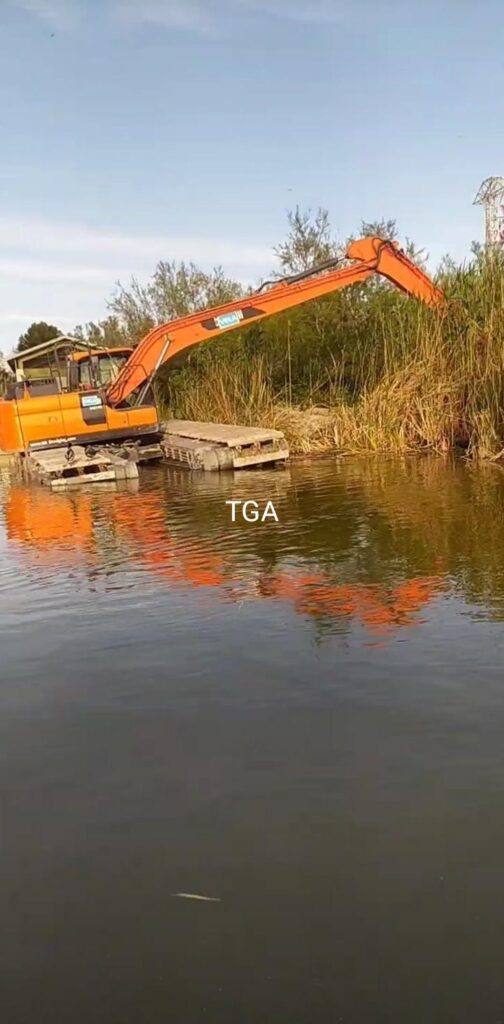The Construction of dams
The construction of dams has been an important milestone in the development of civil engineering, allowing the control of water and the generation of hydroelectric power.
Throughout history, impressive dams have been built all over the world, using modern machinery and advanced techniques. In this article, we will explore the dam construction process and introduce the 10 largest dams in the world, highlighting the key machinery used in these types of projects.
Important stages of dam construction
The construction of the dam is a complex process that involves several stages, from planning and design to the physical construction of the structure. Following is a summary of the key steps involved in the construction of the dam.1. Planificación y Diseño: En esta primera fase, los ingenieros realizan estudios de factibilidad para evaluar la viabilidad económica y ambiental del proyecto. Se realizan investigaciones geológicas y topográficas para determinar la ubicación exacta de la presa.
- Planning and Design: In this first phase, engineers conduct feasibility studies to evaluate the economic and environmental viability of the project. Geological and topographic investigations are carried out to determine the exact location of the dam

2. Site preparation: Before construction begins, the land is cleared and leveled. Roads are built for the transportation of materials and heavy machinery
3. Foundations and Excavation: Earth is excavated to form the foundation of the dam. This may involve removing large amounts of soil and rock. In some cases, controlled explosives are used to facilitate excavations.

- Construction of the structure: Once the excavation is finished, the construction of the main structure of the dam begins. This involves placing concrete or similar building materials in layers, creating a waterproof barrier.


5.Installation of equipment: In this stage, the gates, turbines and other equipment necessary to control the flow of water and power generation are installed.
6. Testing and Completion: After construction is complete, extensive testing is carried out to ensure the safety and proper operation of the dam. Final inspections and adjustments are carried out before the dam is put into operation.
Modern machinery used for dam construction
La construcción de presas modernas requiere el uso de maquinaria especial para realizar trabajos de excavación, transporte y construcción. Algunas de las máquinas más importantes utilizadas en estos proyectos son:
Modern machinery used for construction of dams: Construction of modern dams requires the use of special machinery to carry out excavation, transport and construction works. Some of the most important machines used in these projects are:
- Large excavators: These machines are used for the excavation of large volumes of soil and rock, allowing the creation of the foundations of the dam.
- Dump Trucks: Dump trucks are essential for transporting materials like soil, rocks, and concrete at the dam construction site.
- Tower Cranes: These high-rise cranes are used to lift and place heavy materials during dam construction.
- Rock drills: Rock drills are used to create holes and perform controlled blasting in rocky terrain, facilitating excavation.
- Concrete machines: These machines are responsible for mixing and pumping large amounts of concrete in the structure of the dam, guaranteeing its resistance and durability.
- Dredging equipment: In cases where the dam involves the construction of a reservoir or artificial lake, dredging equipment is used to remove sediment and maintain storage capacity.


Large Dams of the World
Next, we present the 10 largest dams in the world, considering their height or storage capacity:
1. Three Gorges Dam (China): The largest dam in the world, with a height of 181 meters and capacity to store 39.3 billion cubic meters of water.
2. Itaipu Dam (Brazil/Paraguay): This dam on the Paraná River has a height of 196 meters and is the second largest in the world in terms of hydroelectric power generation capacity. Itaipu was started in 1971 and went into production in 1984.
3. Xiluodu Dam (China): At 285 meters high, it is the third highest dam in the world and has a storage capacity of 12.67 billion cubic meters. 2005-2013
4. Guri Dam (Venezuela): Located on the Caroní River, it is one of the highest dams in the world, with a height of 161 meters and a storage capacity of 135 billion cubic meters. Construction years from 1963 to 1978
5. Oroville Dam (United States): Located in California, it is one of the largest dams in the United States, with a height of 230 meters and a storage capacity of 4.32 billion cubic meters. Construction lasted from 1961 to 1968
6. Grande Dixence Dam (Switzerland): With a height of 285 meters, it is the highest dam in Europe and has a storage capacity of 400 million cubic meters, project duration from 1950 to 1961
7. Akosombo Dam (Ghana): Located on the Volta River, it is one of the largest dams in Africa, with a height of 114 meters and a storage capacity of 144 billion cubic meters. 1961-1965
8. Aswan Dam (Egypt): This dam on the Nile River is 111 meters high and has a storage capacity of 169 billion cubic meters. 1960-70
9. Hoover Dam (United States): Located on the Colorado River, it is one of the most iconic dams in the United States, with a height of 221 meters and a storage capacity of 35.2 billion cubic meters. 1931-1936
10. Almendra Dam (Spain): With a height of 202 meters, it is one of the highest dams in Europe and has a storage capacity of 3.16 billion cubic meters. The duration of construction from 1963 to 1970
El GERD
¿El GERD de Etiopía pertenecerá a la lista de las 10 presas más grandes del mundo conocidos hasta ahora ?

